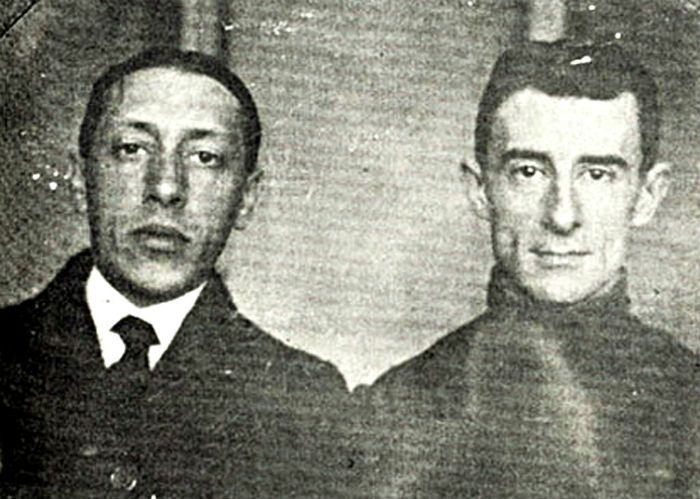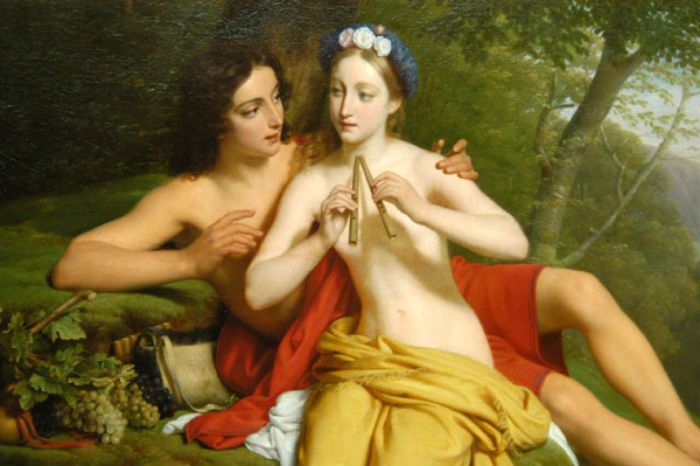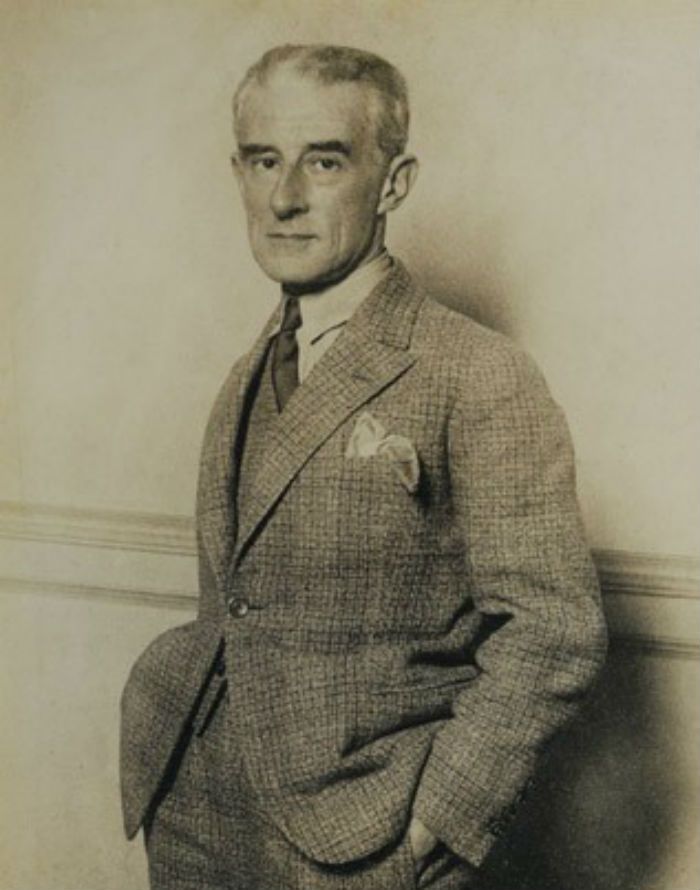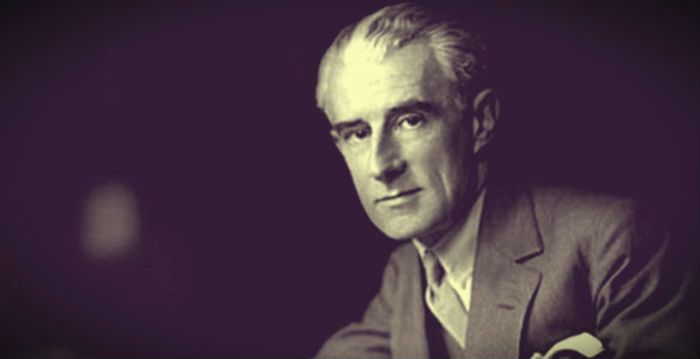Even though Ravel’s music was innovative, he did not follow the trend towards atonality Schoenberg pioneered. But, rather, applied the aesthetic of the New French School of Chabrier, Satie and Debussy.
He emphasized the importance of melody, stating to his pupil Ralph Vaughan Williams that there is “an implied melodic outline in all vital music.” Dances and folk tunes constituted a major source of inspiration: dance-wise he favored the minuet, composing the Minuet sur le nom d’Haydn (1909) and drew material from the forlane, the rigaudon, the waltz, the czars, the habanera, the passacaglia and the boléro, while in his Tzigane, he draws from Paganini’s and Liszt’s gypsy themes.
Ravel’s scholar Arbie Orenstein defined his art as “supremely French”, stating that his creative process “was based upon the time-honored French tradition of imitation.” Not only did this include the imitation of the music of other composers, but he imitated the sounds of the world around him, which made him the spiritual descendant of the Renaissance composers of programmatic chansons and the baroque clavecinists.
Much like it happened to Mozart, Ravel’s originality tends to go unnoticed because, in the words of New York Times critic Alex Ross, “he could not help pleasing the ear even as he set out to shock it”.
Feel free to Subscribe to Our YouTube Channel if you like this video!
Without delving into biography, here are six interesting facts about Ravel’s personal and artistic life.
The Perfectionistic Craftsman
Igor Stravinski once described Ravel as “The most perfect of Swiss watchmaker,” which refers to the intricacy and the precision of Ravel’s works. Ever since he was a child, he displayed a strong interest in minute objects, miniatures, the tiny world of figurines and little things that worked by clockwork, Ravel himself admitted to striving for technical perfection: “My objective, therefore, is technical perfection. I can strive unceasingly to this end, since I am certain of never being able to attain it. The important thing is to get nearer to it all the time,” he wrote.

Ravel credited Edgar Allan poem as his “teacher in composition,” as Poe taught him that true art is a perfect balance between pure intellect and emotion.”
Ravel used a miniaturist approach to build the architecture of his composition, and many of his innovative composition where developed first as piano music, in regard for the traditions of Mozart, Chopin and Liszt. As an orchestrator, he usually notated the string parts first and insisted that that section “sound perfectly in and if itself.”
The Bolero was originally composed as a ballet commissioned by Russian actress and dancer Ida Rubinstein with Fandango as a working title. It begins with a pianissimo and ends in fortissimo possibile. When it premiered at the Paris Opera on November 22nd 1928, it was choreographed by Bronislava Nijinska and the following scenario by Rubinstein and Nijinska was printed in the program:
Inside a tavern in Spain, people dance beneath the brass lamp hung from the ceiling. [In response] to the cheers to join in, the female dancer has leapt onto the long table and her steps become more and more animated. Ravel, however, had a different preferred stage design, namely an open-air setting with a factory in the background, which reflected the mechanical nature of the music.
Conductor Toscanini, who gave the American premiere of Bolero one year later with New York Philharmonic, performed the work at a significantly faster tempo than Ravel preferred. So, when Toscanini performed with the New York Philharmonic at the Paris opera as part of their European tour, Ravel expressed his disapproval by refusing to respond to Toscanini’s gesture during the audience ovation. A quarrel ensued, and the Toscanini affair became a cause celèbre that furtherly increased Bolero’s fame. The fortune the Bolero had in popular culture is epitomized in the love scene of the movie Ten.
Daphnis et Chloé
A“choreographic symphony,” Daphnis and Chloe is Ravel’s longest composition. Lawrence Kramer, author of Classical Music and Postmodern Knowledge, declared that Daphnis et Chloé culminates in a chorus that is “the most explicit representation of orgasm in all ‘classical’ music.” Commissioned by Diaghilev, Daphnis et Chloe is a choreographic symphony in one act and three scenes. Originally, the works was commissioned in 1909 and , since Ravel was slow to deliver, Diaghilev sent him to St. Petersburg to work with choreographer Mikhail Fokine and Bakst. During the compositional stage, he also experienced episodes of neurasthenia.
Based on an Ancient Greek novel by Longus, Daphnis and Chloe originally narrates the erotically exuberant love between a goatherd and a shepherdess. Yet, compared to the Ancient Greek original work and Fokine’s initial intentions, however, Ravel’s rendition is much more chaste than the original. Ravel and Fokine envisioned a different conceptualization for the work: while the former wanted to capture the imagery of Ancient Greek vases, the latter was inspired by 18th-century paintings.

Diaghilev was infatuated with Nijinsky, the dancing virtuoso who danced the role of Daphnis and whose floating leaps had actually inspired some of the soaring figures in Ravel’s score. Curiously, the ballet premiered on June 8th, 1912, just ten days after the first ballet performance (on the same stage) of Debussy’s Prelude de l’après-midi d’un faune , where Nijinsky’s explicit final masturbatory act had caused a lot of clamor.
His sexual enigma
Ravel is not known to have had any intimate relationships at all, and he allegedly remarked once that, due to his perfectionism and his devotion to his work, he could never have a lasting intimate relationship with anyone, save for his own music. “We are not made for marriage, we artists. We are seldom normal, and our life still less so,” he wrote to Hélène Casella. His closest personal attachment was with his mother, with whom he lived until she died in 1917.
In Maurice Ravel: A Life (2000) Benjamin Ivry tries to demonstrate, mainly by circumstantial evidence, that Maurice Ravel was “a very secretive gay man,” and that his homosexuality explains both the sensuality of his music and the aridness of his human relationships (read a sample chapter here).
The concept of “sublimation” has figured significantly in the critical discourse on Maurice Ravel and his music. In fact, biographers rationalize Ravel’s apparent lack of a sex life by suggesting that his libido was sublimated into the production of his works. This may be traced back to Ravel’s alleged dandyism, as the dandy was a figure who, in Baudelaire’s words, aspires to be sublime without interruption, and part of the dandy’s repertoire of behaviors includes the act of shunning vulgarity and demonstrations of passion.

His most masterful orchestration
“Musorgsky’s Pictures at an Exhibition would possibly not have gained its place in the musical canon, even as a piano work, had it not been for Ravel’s transcription,” states Deborah Mawer in The Cambridge Companion to Ravel. In fact, Musorgsky’s original work generated little interest among pianists when it was published posthumously in 1886.
Ravel’s orchestration was produced in 1922 on a commission by Serge Koussevitzky. In his orchestration, he applied artistic license to some particulars of dynamics of notation: a trumpet solo for the opening promenade and dark woodwind tones for passages suggesting an Orthodox chant and the piccolo and high strings for the children’s chicks in shells.
Other transcriptions he produced, however, were not met with such acclaim. His transcription of Schumann’s Carnaval, for example, was described as “unaccountably clumsy”.
Narcissist, they said
To Maurice Ravel, appearances mattered: Biographer Madeleine Goss relates that, while appearing as a conductor with the Chicago Symphony Orchestra on January 21st, 1928, he delayed a performance for half an hour because, he realized, he did not have his evening shoes and realized they were in his trunk that had already been transported to the station, awaiting his departure. As a consequence, soprano Lisa Roma took a taxi to the station to retrieve the right evening shoes from the composer’s left luggage. Alma Mahler, with whom Ravel stayed for three weeks, described him as a narcissist, “He came to breakfast rouged and perfumed, and he loved the bright satin robes that he wore in the morning,” she related. In an interview with France Culture in 1985, however, Ravel’s former student and composer Manuel Rosenthal dismissed Mahler’s anecdote as “nonsense”.

